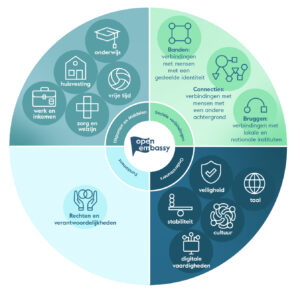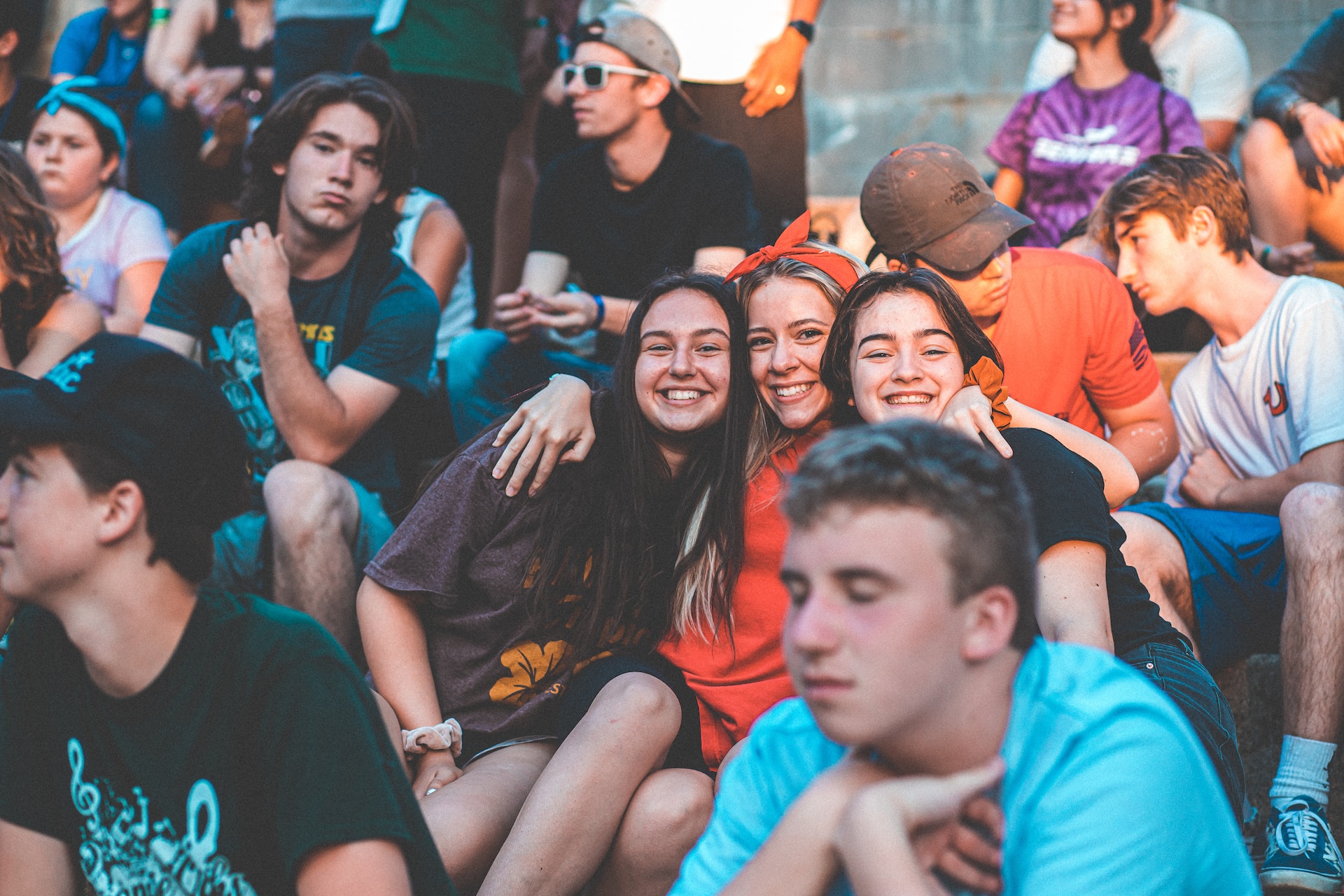Relocation to another country, whether by choice or not, is much more than finding a job, a place to live, healthcare, and schools for children. It also involves establishing new connections with local institutions and residents, as well as finding one’s own people. Perhaps it sounds simpler than it is in reality. Still, experience shows that the level of stress from relocation is often underestimated. Read on to learn how participating in local communities can be healing and fulfilling during adaptation and integration into a new society.
Navigating new beginnings:
a guide for newcomers in the Netherlands
In 2015, when I first moved to the Netherlands, I didn’t know anyone in the new country, and for the first month, I was afraid to even answer “ja” to “tas nodig?” Later, I started to meet random acquaintances who had nothing in common with me except the experience of immigration. Surprisingly, quality relationships cannot be built on such a basis. Thus, the first community was born eight years ago, which I have been building since then.
KOLO Community:
fostering unity among newcomers in the Netherlands
In 2022, when Russia fully invaded Ukraine, and throughout the following year, about 100,000 new Ukrainian newcomers arrived in the Netherlands. These were people who did not choose immigration, hastily packing their belongings often in a single backpack, finding themselves face to face with a new country where they knew no one and knew little about. At this moment, the KOLO community emerged: a place where people support their own.
The community included both newly arrived Ukrainians and Ukrainians who had been living in the Netherlands for some time. Initially, it resembled a helpdesk — discussions on finding a general practitioner, school, housing. However, once the basics of the 14 indicators of integration were completed — housing, work, school for kids, the value of the community changed.

Building bridges:
how community empowers newcomers in the Netherlands
Certainly, we are happy to welcome anyone who wants to join the community, but there are some rules that are sent before adding a person to the Telegram chat. They are basic, but it’s worth discussing them so that each participant immediately gets the impression: if I respect others here, I will be respected here too. Thus, a safe space was created where people could be themselves.
“I can come to a KOLO meeting and just be close to my own, be silent if not in the mood to talk. I remember tears at the meetings that spoke more than any words. And a community that allows you to cry and be accepted is worth its weight in gold!”
In addition to a safe space and shared values, here are some basic tricks I always use to create a welcoming, warm, and safe environment during community meetings for newcomers:
KOLO’s recipe for community success:
shared values and inclusive spaces —
- Q&A: When a new potential participant has questions about the community — I am happy to answer any of them: our rules, values, activities. We also create public materials with members’ feedback from time to time, so anyone can have easy access to it, and make an impression about the atmosphere in the community.
- Warm welcome: Greet participants warmly and make them feel valued from the moment they arrive. Introduce them to the group and highlight the friendly and inclusive nature of the community. Here name tags work great to transfer from strangers to a person I know the name of.
- Inclusive atmosphere: There are set rules to become a member of the community and at the beginning of every event I repeat them, to remind participants: “please follow these rules to make a safe atmosphere where you can be any”. And in case you feel discomfort, you’ll be protected by the group and a moderator.
- Cultural sensitivity: All the participants have different experiences and backgrounds and it’s essential to remain sensitive to our diversity, by simply acknowledging it.
- Feedback mechanism: After every event I write a personalized message to everyone who participated, saying thank you specifically for this person and asking for honest feedback, whether positive or negative, to improve the next event and keep in touch with the community’s needs and requests.
- Event calendar: An instagram page, easily navigated website or telegram group with pinned messages where participants can check the upcoming events and activities, make their contribution to be more involved into the community’s life or share information among other people is beneficial.
- Helpdesk: Make sure that community is a place of support and if anyone has any questions, they are welcomed to ask, as there are enough people with different experiences in the community.
- Interaction with participants: In addition to finding friends or project partners, participants also actively contribute to the development of the community. Therefore, involving participants in the community’s development makes it even more extensive in terms of mutual interaction.
A real example of how the KOLO community helped:“A post in the chat says that the girls are looking for cheaper housing in Amsterdam because they are attending a meeting.I invite them to stay overnight at my place because I can and trust them, all because they are from KOLO! I continued to communicate with one of the girls, and on January 4th, she started working at a place I recommended (my former workplace). If it were another chat, I might have missed it.”
According to the 14 Indicators of Integration framework, there are three kinds of social connections that are important for newcomers to feel at home and build there lives in a new country: with local institutions, local residents, and among other newcomers.
Based on these moments, the following events were organized: In collaboration with the local organization AWB, stress management meetings were held, where participants felt accepted and worked through accumulated stress in an informal atmosphere.
Together with Petra ter Doest and Stacci Pierce, several webinars on job search in the Netherlands and adaptation in a new country were conducted. The webinar was watched by thousands of people.
Reading meetings, goal-setting workshops, integration experience exchange meetings among participants, and many others were organized. What makes the KOLO community even more inclusive is that participants themselves propose and organize events for others, thus enriching the community.
“What impresses me the most is the incredible women gathered here and how attentively you moderate activities, with consideration for each one. It doesn’t matter exactly what we are doing; I feel at home with you. Whatever you propose, the meeting will be filled with warmth and meaning.”
If you are on a journey of building connections, understanding, and a sense of belonging in a new community, or you’re a newcomer or someone passionate about fostering inclusivity, I’m here to help. Feel free to reach out if you have questions, need guidance, or simply want to share your experiences. Together, we can create a meaningful community where everyone feels valued and supported.
Contact Anna Bilenka, at anna@openembassy.nl, and let’s embark on this journey of connection and integration together.
Photo by Kyle Smith


